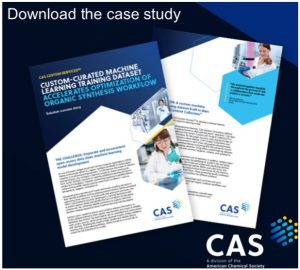Behind every element are stories on how it was discovered, on the scientists behind the element and the stories on its amazing developments and applications. This feature will bring you very interesting and not widely known nuggets behind every element. Do you know that once upon a time just when Aluminium was discovered, it was costlier than gold and silver?So much so that the royalty in France and elsewhere considered aluminium plates and cutlery to be used only by the Royals and not the commoners. Continuous and successive developments in extracting aluminium from widely available ores crashed its price and brought it down to earth. Read these interesting tales on aluminium.
It’s strange but true. Unlike other metals like copper, gold, silver, lead, and iron that man has been familiar with for thousands of years, the existence of aluminium, the most abundant metal in the earth’s crust, was unknown to us till just around two centuries ago. The reason was that aluminium is one of the most chemically reactive metals and hence, not found in its metallic form in nature, occurring naturally only in the form of its compounds in rocks, soil, and vegetation, bauxite being its principal ore.
The first methods developed in the early 1800s for separating aluminium from its ore were so costly that for several decades afterwards, it continued to be a rare and expensive metal costing much more than precious metals like gold and silver. So much so, that in the 1860s, the French Emperor Napoleon III had a cutlery set of aluminium made especially for entertaining his most important guests. The others had to use tableware made of silver.
At that time, aluminium cost over $ 500/lb. But guess what? Just 50 years later, its price plummeted to less than half a dollar for a pound. What brought about the dramatic change was an innovative, cheaper method for producing pure aluminium developed simultaneously, but independently, in the US and France by two young scientists. Their momentous achievement is the reason why today, we can see aluminium in use almost everywhere, from kitchen utensils to high-rise buildings, and from aeroplanes down to cans for packaging aerated drinks.
Around that time, in his novel ‘From the Earth to the Moon’ (1865) about humankind’s imaginary, pioneering attempt to send man to the moon, Jules Verne wrote that the material he chose for building his space capsule was aluminium, and described it as ‘a valuable metal’ possessing ‘the whiteness of silver, the indestructibility of gold, the tenacity of iron, the fusibility of copper, the lightness of glass’.
An interesting history
While the existence of aluminium remained hidden till recently, its compounds were known to humans for millennia. Alum (aluminium potassium sulphate), one of its most important compounds, was used even by ancient civilizations. The Romans used it as an astringent for healing cuts and as a mordant for dyeing cloth. The Turks used it to make a dye called Turkey Red. Ancient potters in Persia and elsewhere used clays rich in aluminium silicates.
Slowly, over time, chemists realised alum could contain a new element. Between 1807 and 1809, the English chemist Sir Humphrey Davy, who had already separated elements like sodium and potassium by electrolysing their molten compounds, tried unsuccessfully to isolate aluminium by electrolysing fused alumina (aluminium oxide). But, he wasn’t the only one to have failed. For several decades before him, many other scientists across Europe including Lavoisier, who was keen on discovering the mysterious element in alum, had also tried to accomplish the difficult task of separating aluminium from its compounds. But aluminium continued to defy all attempts at extracting it. However, Davy understood compounds of other metals enough to be sure that alum was the salt of some till then unknown metal. In 1808, he even suggested this metal could be called alumium and after a couple of years modified this to aluminium. British scientists later decided on the name aluminium.
German chemist Friedrich Wöhler tried reducing aluminium chloride using potassium metal as the reducing agent, producing a small quantity of aluminium powder in 1827, and in 1845 a few small globules of the silvery metal, enough for him to carry out some basic research on it. Scientists were excited by its sparkle, but more than that, by its amazing lightness. However, Wöhler’s method of extraction was too costly for putting the metal to commercial use.
Realising the significance of finding an inexpensive way of isolating aluminium, European chemists continued research in this direction. One of them, French chemist Henri Sainte-Claire Deville found a way of producing a larger quantity of aluminium in 1854 by reducing aluminium chloride with sodium, a much cheaper metal than potassium. A year later, aluminium bars were exhibited to the public at the Paris Exposition alongside the French crown jewels as ‘the silver from clay’. With the commencement of smallscale industrial production of aluminium, in a few years, its price dropped to around $40/lb.
Soon, more of aluminium’s alluring properties became known besides its low density, such as its high tensile strength and malleability, excellent thermal and electrical conductivity, and its incredible resistance to corrosion. Around that time, in his novel ‘From the Earth to the Moon’ (1865) about humankind’s imaginary, pioneering attempt to send man to the moon, Jules Verne wrote that the material he chose for building his space capsule was aluminium, and described it as ‘a valuable metal’ possessing ‘the whiteness of silver, the indestructibility of gold, the tenacity of iron, the fusibility of copper, the lightness of glass’.
Deville’s method, however, was still not suited for large-scale production of aluminium as the quality of the metal was not good enough and the production costs were still high. Then, in 1886, two 23- year old researchers – the American, Charles M. Hall, and Frenchman, Paul L. T. Héroult, changed things around by achieving the desired breakthrough that more experienced scientists had been struggling to pull off for decades.
Aluminium can also be easily melted, recovered and recycled with no loss of its original qualities and by using a very low amount of energy. Being 100% recyclable, aluminium can be re-used over and over again indefinitely, making it an environment-friendly metal.
Historic breakthrough by Hall and Héroult
Hall, studying at Oberlin College in Oberlin, Ohio, used rudimentary, homemade equipment, working in a woodshed in his backyard and his college lab to carry out experiments for finding a cheaper way of producing aluminium. Around the same time in Paris, Héroult, a former engineering student at the School of Mines, also keenly interested in the problem of reducing the price of aluminium, was carrying out experiments of his own. It is believed that Hall’s interest in aluminium was deepened even further after attending a lecture by Frank Jewett, his chemistry professor. Jewett had let his students examine a lump of aluminium he owned and told them that “if anyone should invent a process by which aluminium could be made on a commercial scale, not only would he be a benefactor to the world, but would also be able to lay up for himself a great fortune”. Héroult was similarly influenced by his own chemistry professor Henry Le Chatelier, well respected for his knowledge about aluminium.
Working independently, Hall and Héroult found that if alumina was dissolved in molten cryolite (sodium aluminium fluoride) it could be reduced to aluminium electrolytically. Both of them filed for a patent of their production process in 1886. Their discovery led to the price of aluminium plunging to $ 0.40/lb! However, another discovery too played a significant role in this development. In 1888, the Austrian chemist Karl Joseph Bayer found a cheaper way of obtaining alumina, the raw material for the Hall-Héroult the process, from bauxite. Thus, the inexpensive methods of extracting aluminium oxide from bauxite, and aluminium from aluminium oxide led to the start of the era of cheap aluminium. Till today, the Hall-Héroult and Bayer processes are used for producing almost all of the world’s annual production of millions of tonnes of aluminium.
Interestingly, Hall and Héroult not only discovered and patented their processes in the same year, they also shared the same birth year (1863), and died in the same year (1914) too, just a few days apart from each other.
The metal of the future
As Jules Verne had foreseen, aluminium has proved to be a boon for air and space travel. Modern-day aircraft and spacecraft use aluminium alloys extensively for different parts.
Aluminium plays a key role in sea and road transportation as well. Since the last few years, automobile manufacturers like General Moros, Ford, and Jaguar Land Rover have increased their demand for aluminium for manufacturing lighter vehicles. Lighter car bodies translate into higher fuel efficiency, better acceleration and braking, and also ensure lower carbon emissions. Aluminium’s corrosion resistance is another plus point as it eliminates the need for expensive anti-corrosion paints that steel car bodies need. Experts say the average aluminium content in a car could increase by 60% by around 2025. Today, aluminium is also used in Japanese and Chinese high-speed trains for reducing their weight and friction resistance.
Aluminium products used in building construction ensures the buildings are maintenance- free, and thermally more efficient. New York City’s Empire State Building was the first skyscraper in which aluminium was widely used. Today, aluminium products are commonly used for constructing high-rise buildings and bridges. The use of aluminium significantly reduces the construction cost as heavier steel-made buildings need much deeper foundations. Today’s smartphones, laptops, and flat-screen TVs too are manufactured with a higher amount of aluminium as it prevents them from overheating.
Aluminium can also be easily melted, recovered and recycled with no loss of its original qualities and by using a very low amount of energy. Being 100% recyclable, aluminium can be re-used over and over again indefinitely, making it an environment-friendly metal. According to many experts, someday in the future, we may stop mining bauxite and just keep re-using the aluminium we already have.
References:
1. Azom.com: Aluminium, The History, Discovery and Development as a Product – AZo Materials, 20 July 2002, https://www.azom.com/article.aspx?ArticleID=1530
2. John Emsley: Aluminium – Education in Chemistry, Royal Society of Chemistry, 7 January 2014
3. Laurence Knight, Tim Bowler: Aluminium: The metal that just keeps on giving – BBC Magazine, 23 November 2013
4. Daniel Rabinovich: The allure of aluminium – Nature Chemistry, 18 December 2012
5. Stephanie Pappas: Facts about Aluminium – https://www.livescience.com/28865-aluminum.html, 28 September 28, 2014
6. Tom Geller: Aluminum: Common Metal, Uncommon Past -Distillations Magazine, Winter 2007–2008
7. Gregory H. Robinson: Aluminum – C&EN, 8 September 2003.

































